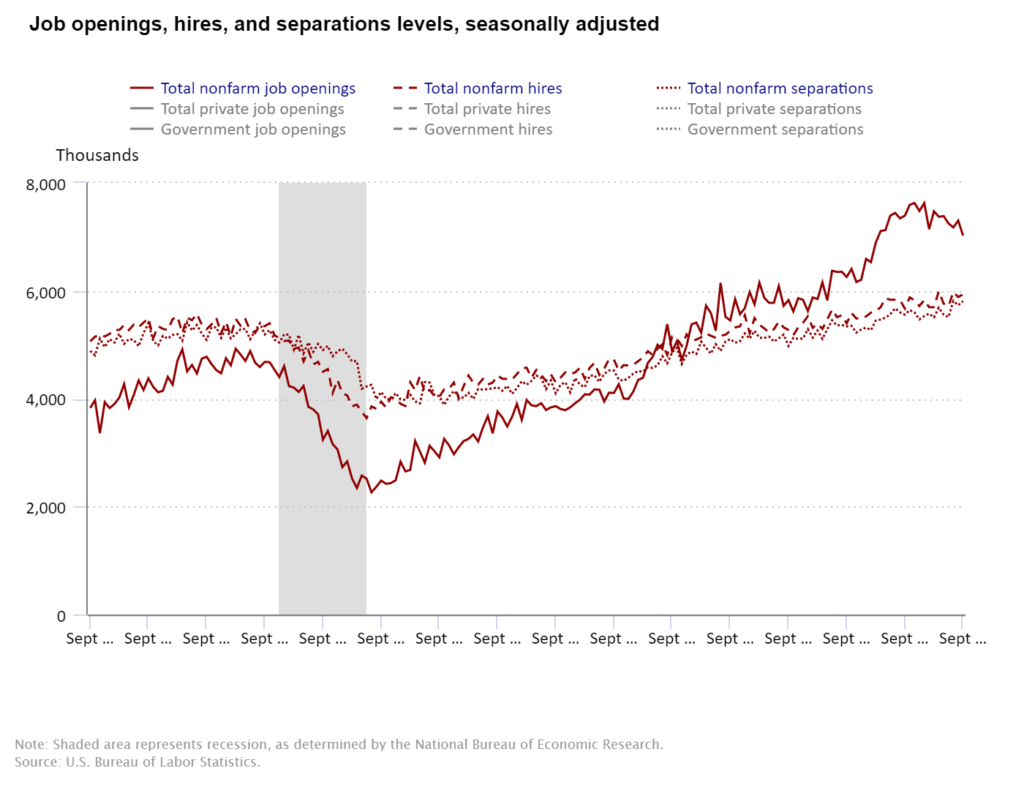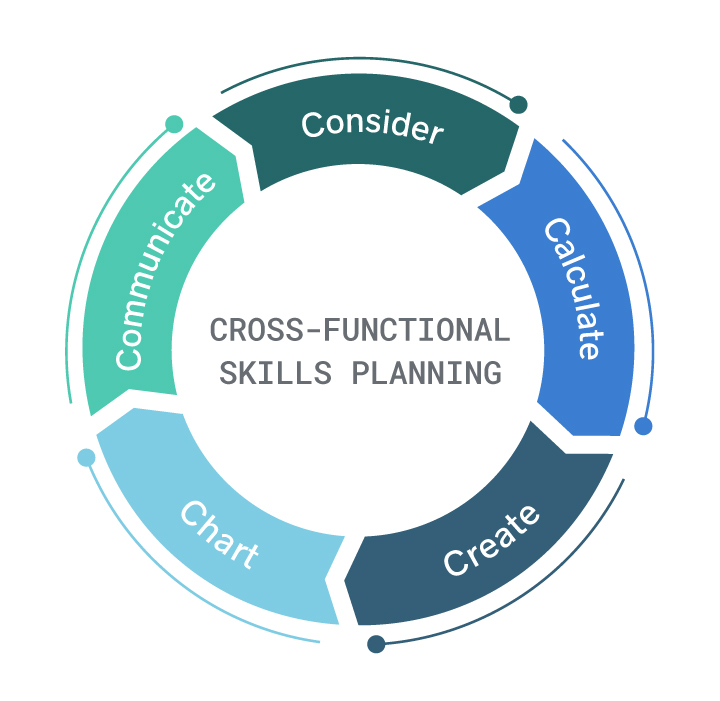
Executives at all levels have voiced concerns about the skills gap: the difference between the competencies that companies need to be successful and the ones today’s job seekers offer.
In the middle of this are educational institutions, trying to meet tomorrow’s workforce demands using a centuries-old model. The picture these trends paint is quite confusing, especially at a time when unemployment reports are at record lows, yet the number of open job postings continues to increase.

Using a Skills Gap Analysis to Size the Challenge
Key to making sense of these trends is understanding the mindset many hiring managers have, in which every job requires specific—and non-negotiable—technical skills. Many jobs do, of course. Yet while employers post job descriptions that list role-specific requirements, analysts warn that college graduates who meet these requirements today will need to be re-trained for the same role in about 6 years.
So employers must, at the same time, attract skilled new hires while ensuring that current employees have the intellectual capital that’s required to meet the needs of the business. A solution to both concerns is to conduct a skills gap analysis and use the learnings as a strategic business tool, both for maintaining access to the skills that the enterprise needs now and planning its requirements for the next 12 – 36 months.
This requires a cross-functional planning initiative that brings together teams from human resources, operational business units, marketing, research, and talent development to identify the competencies that are needed in the future. It results in a talent strategy that aligns a career pathing model with a ladder of learning that clearly communicates the progression for professional growth. This 5C model begins by considering the business direction and goals, calculating the skills and competencies needed to support and grow the organization, and creating a learning ladder that provides employees opportunities to be prepared. It then charts the progress of people and planned growth—while maintaining an active communication line between leadership teams and the participants that are now filling the talent pipeline.

When most companies undertake the exercise, they also find gaps that may be difficult to address with permanent employees, whether because they are only needed at specific moments, like M&A deal evaluation, or because they are emerging skills, like AI, whose role to the business is still unclear. Fill these gaps by incorporating independent talent into your plans, which can reduce recruitment costs, increase organizational agility, and boost performance and competitive advantage.
How Training Can Bridge the Gap
Effective talent development has substantial business benefits, from a reduction in the amount of time it takes to fill open roles to higher total shareholder returns. Why? A clear career path helps employees see all available options for job progression, enticing them to stay. It also helps them understand the key competencies they’ll need to demonstrate in order to reach each new level—and the different ways they can acquire these skills.
Just how can using learning as a strategic business tool impact an organization? Consider the results reported by Starbucks five years after it launched the generous Starbucks College Achievement Plan, which combines scholarship and reimbursement funds:
Yet it’s important to understand the factors that make successful talent development initiatives work. Beyond skills training, learning programs must include the behavioral abilities required for employees to be successful as they operate across functional and organizational boundaries. Technical skills might get someone the job, but competencies like communication, adaptability, prioritization, time management, and teamwork are the keys to long-term success—and need to be included in the career pathway model.
And, as it turns out, these so-called soft factors can drive real impact on performance metrics, from attrition rates to the bottom line. A recent case study in SHRM relayed the findings of an organization that faced a 60% turnover rate. After undertaking a detailed review to define and measure the competencies needed for specific roles, the HR team implemented a competency-based selection process. The result was a reduction in turnover to under 20%.
Conducting Your Skills Gap Analysis
Giving employees at each level the ability to build on knowledge and skills is one of the most effective ways to bridge the skills gap. Individuals can identify new experiences, education, and training that will prepare them to move to new jobs in other job roles across an organization. Here’s how your organization can conduct its own skills gap analysis:
- Identify the workforce staffing predictions for the next 12 – 36 months
- Define and describe the skills and competencies your business will need
- Identify the gaps between what can be offered and acquired today and what will need to be added
- Incorporate independent talent into your plans to make the best strategic use of this powerful resource
- Define the path by which permanent employees will be prepared for their future roles
- Communicate the process and support the people
Independent consultants can do more than strategically augment your workforce. They can also support the creation of effective talent development plans by incorporating existing resources, like internal training programs and formal courses or degree programs, as well as expanded professional development options such as job shadowing, stretch assignments, and job sharing. And they can help you address blind spots in your organization—a real issue given the behavioral factors I mentioned earlier, not to mention the gap between how CEOs and HR leaders assess the strength of their talent development programs and the way others in the company view them.
To maximize employee engagement and develop a talent pipeline that will meet your business needs in the future, hire for the best blend of technical skills and behavioral competencies and plan for future career opportunities. You’ll be rewarded with enthusiastic workers who are aligned with the organizational purpose, culture, and mission—and eager to drive results.
GET THE SKILLS YOU NEED
Thousands of independent consultants, subject matter experts, project managers, and interim executives are ready to help address your biggest business opportunities.
About the Author
More Content by William J. Ryan



















